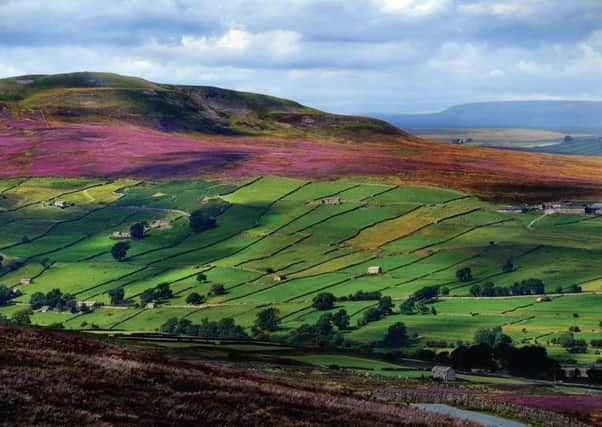Inflation bites in decade of cuts for national parks


Severe cuts to the annual grants for most of the protected landscapes under the coalition were followed by a pledge by the last Conservative government to protect funding for English national parks up to 2020.
But an analysis of figures obtained under the Freedom of Information Act suggests that most parks will have suffered a real-terms fall of more than 40 per cent in funding from 2010 to 2020.
Advertisement
Hide AdAdvertisement
Hide AdThe assessment examined the funding settlement between 2016 and 2020 for each park, set out by then environment minister Rory Stewart in a letter to National Park Authorities in January 2016, and compared it to previous annual grants.
It uses Treasury forecasts for inflation to track the change in grant levels for all 10 national parks from 2010 to 2020.
The analysis finds funding for eight parks, including the North York Moors, the Peak District and the Lake District, which has just been designated a World Heritage Site, could be roughly 43 per cent below 2010 levels by the end of the decade once inflation has been taken into account.
Despite seeing its size increase by a quarter following a boundary extension last summer, the Yorkshire Dales National Park is likely to suffer a real-terms fall in funding of almost a fifth - 19 per cent - over the 10-year period.
Advertisement
Hide AdAdvertisement
Hide AdIn addition to cuts for most parks before 2015, they all face a further squeeze from rising inflation, which is now well above the 1.72 per cent the Government used to calculate the annual rise in the settlement from 2016-2020 as it sought to protect funding.
The Campaign for National Parks’ chief executive Fiona Howie said the analysis was “deeply concerning”, explaining that the cuts between 2010 and 2015 led to closure of information centres, an end to much of the work on keeping rights of way open and a halt to efforts by some parks on flood defence, conservation and climate change mitigation.
Since January 2011, funding cuts to the Yorkshire Dales National Park Authority have seen staff numbers cut by 26 per cent - a total of 34 job losses - and a third of its 36 work programmes have been axed, including in education, events, park information points and public transport.
The Park Authority’s treasurer, Richard Burnett, said: “Inevitably, the cuts hurt: some programmes of work had to be stopped and many others have had to be scaled back. But we have never bleated about it. The cuts we faced were in line with what local councils had to deal with, and it would be naïve not to acknowledge the difficulty of funding the public sector after the recession.”
Parks have had to find new ways of raising money.
Advertisement
Hide AdAdvertisement
Hide AdMr Burnett said: “We are now working very hard to plug the gaps by raising money to supplement our Defra grant. This year, we will be bringing in just over £1.6m on top of our Defra grant to help us to deliver our objectives - a record for the Authority.”
The Yorkshire Post reported yesterday how one of the North York Moors National Park Authority’s main aims this year is to raise the park’s profile and attract more visitors, despite operating on reduced government funding.
Michael Graham, the authority’s assistant director of park services, said: “We’ve consolidated our working position and most of these cuts have now happened. We’re only going to see a small impact from inflation over the next few years so we are confident that we can attract more people to the park and cope with it.
“We have adapted our way of working. While, for example, we have reduced our rights of way staff, we are working with more volunteers, and we have more clearly defined what we are going to do and what we are not going to do with the money we have.
Advertisement
Hide AdAdvertisement
Hide Ad“We have negotiated a new agreement on how we manage our rights of way with North Yorkshire County Council, including our responsibilities for bridges. Inevitably some of the less used routes may suffer as we focus on our promoted routes. But we are constantly looking for ways to improve our service to the public and the possibility of applications for external funding - and we are working more closely with businesses than ever before.”
Simon Malcolm, director of commercial development at the Peak District National Park, struck a similar tone, saying the park was using “a period of relative stability to develop new income streams and bolster our existing trading activities”.
A government spokeswoman said: “We recognise the value of our National Parks - both to our cultural identity and our economy - which is why we have increased their budgets each year since 2015 and allocated extra funding for the Lake District and Yorkshire Dales.”
REASONS FOR PROTECTION
To meet Government ambitions for national parks to take the lead on connecting young people with nature, promoting sustainable tourism and tackling threats such as flooding, they need to be properly and sustainably resourced, Campaign for National Parks chief Fiona Howie said.
Advertisement
Hide AdAdvertisement
Hide Ad“They provide many public benefits including being part of our shared cultural heritage, being important for wildlife and benefiting the nation’s health and well-being.
“They also play an important role in our rural economy; they are visited by millions of people each year, generating over £4bn annually through tourism and support around 70,000 jobs.
“They need to be properly valued by the Government and supported financially.”